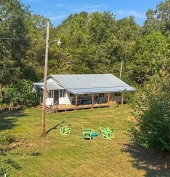




 3
3








Iterations are fine, we don't have to be perfect
My 2nd Location:Florida HardinessZone:10 AHS:10 GDD:8500 Rainfall:2in/mth winter, 8in/mth summer, Soil:Sand pH8 Flat
 2
2




 Besides the inherent beauty of seeing the fields every day, those flowers will obviously attract millions of beneficial insects to improve my crops too – win/win.
Besides the inherent beauty of seeing the fields every day, those flowers will obviously attract millions of beneficial insects to improve my crops too – win/win.
'Every time I learn something new, it pushes some old stuff out of my brain.'

 5
5




List of Bryant RedHawk's Epic Soil Series Threads We love visitors, that's why we live in a secluded cabin deep in the woods. "Buzzard's Roost (Asnikiye Heca) Farm." Promoting permaculture to save our planet.
 3
3




"But if it's true that the only person over whom I have control of actions is myself, then it does matter what I do. It may not matter a jot to the world at large, but it matters to me." - John Seymour











 1
1




Bryant RedHawk wrote:The way farm size works is on the principle of logistics, Take a standard "big" farm (these are in the 1 million acre range) for them to follow any form of organic farming would be impossibly expensive (which is why the USDA Organic standards include some sprays).
In California there are many vegetable growing big farms, some of which are currently under investigation because of the salmonella out break in Romaine lettuce. This points to some problems that have and do still occur when farms try to use cheaper items in their methods of growing.
I have, for years, read papers on how we must "feed the world", but when you look into the logistics of this mind set, it becomes apparent that the best way for the world to be fed is by local growers not by huge industrial farms, as the modern Ag. model insists be done.
Only when there is a local food supply, grown and taken to market, can the population have access to fresh food, which is mandatory for best nutrition value from any produce, the older any food gets, the less nutritional value it will have.
The small farmer can not only compete with the large farms that grow produce but they can actually out perform those huge enterprises simply because of the logistics involved.
Many of the 5 acre "market farms" are making better profits than the huge farms that provide the chain supermarkets.
Redhawk
'Every time I learn something new, it pushes some old stuff out of my brain.'
 2
2
















 3
3




List of Bryant RedHawk's Epic Soil Series Threads We love visitors, that's why we live in a secluded cabin deep in the woods. "Buzzard's Roost (Asnikiye Heca) Farm." Promoting permaculture to save our planet.
 1
1




"But if it's true that the only person over whom I have control of actions is myself, then it does matter what I do. It may not matter a jot to the world at large, but it matters to me." - John Seymour




Bryant RedHawk wrote:Take a standard "big" farm (these are in the 1 million acre range)
Redhawk

|
Live ordinary life in an extraordinary way. Details embedded in this tiny ad:
Learn Permaculture through a little hard work
https://wheaton-labs.com/bootcamp
|






